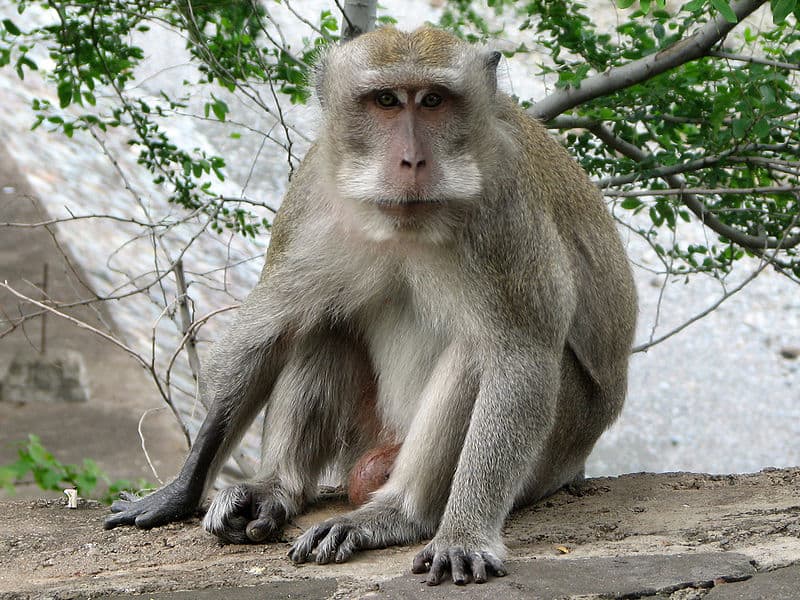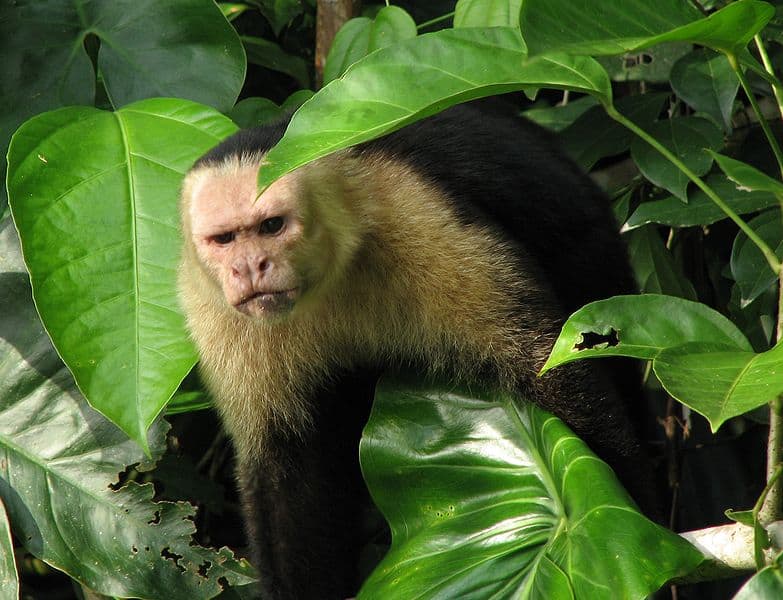Monkeys are one of the relatives of humans and share many characteristics with us. For example, they are not only social creatures but also share physical features. These other anatomical similarities include arms and legs and hands and feet. But despite having five digits, do monkeys have thumbs as we do?

iStock.com/alexandragl1
Yes, Most Monkeys Have Thumbs
Most monkeys, which are primates, have thumbs. They also have hands and feet with five digits each. However, some species of monkeys, like the spider, woolly, and colobus, either have lost their thumbs or include shorter thumbs. This reduced thumb length results from evolution. Scientists believe this development supports their mobility. Also, monkeys’ thumbs are opposable, which means they can move freely and independently. This free movement makes the monkey’s hand prehensile as it can grip objects. Although they can grasp things, the range of this precision differs between species as the evolution of their hands and thumbs varies.
The Thumbs of Old World Monkeys
Old World monkeys are native to Africa and Asia. These monkeys belong to the parvorder Catarrhini and have opposable thumbs. Opposable thumbs are more advanced than new world monkey thumbs. New World monkeys have fingernails and toenails with opposable thumbs resembling those of people. In addition, Old World monkeys’ hands are larger than their New World counterparts. Therefore, they have more precise control over their hand and body movements than monkeys indigenous to the New World. Scientists have measured the degree of their hand and opposable thumb control. They conclude that Old World monkey hands and thumbs are far stronger and more advanced than those in the New World.

Old World monkeys are native to the tropical and equatorial zones and northern parts of Africa or southern Asia, China, and Japan. Most species have tails that are not prehensile. Another feature is that their nostrils are close together and point downward. They also have 32 teeth, cheek pouches for food storage, and thick pads on their buttocks for protection and comfort when sitting. Some of the most well-known old-world monkeys include the colobus, drills, mangabeys, geladas, macaques, proboscis, and leaf monkeys.
New World Monkey Thumbs
New World monkeys are native to Central America and South America. These monkeys belong to the parvorder Platyrrhini and have opposable thumbs that are advanced but not as evolved as Old World monkeys, apes, and humans. New World monkeys have claws on their digits rather than nails. Most species have this characteristic, but marmosets and tamarins do not have claws on their big toes. Although spider and howler monkeys are part of the New World, they have nails on their digits like the Old World monkeys. The hands of New World monkeys have advanced tactile sensitivity, which most Old World monkeys do not have. Tactile sensitivity measures the monkey’s sensitivity to touch and textures.
New World monkeys prefer the tropical areas of southern Mexico to central South America. The species in this group have prehensile or partially prehensile tails, slim bodies and limbs, and slender hands. Their faces and noses are flatter than their Old World counterparts and point outward. Instead of 32 teeth, they have four more. New World monkeys do not have cheek pouches or buttocks pads like Old World monkeys. The most well-known New World monkeys include capuchins, howler monkeys, marmosets, spider monkeys, squirrel monkeys, tamarins, woolly, titis, and night monkeys.

How Do Human and Monkey Thumbs Differ?
Although humans and monkeys have opposable thumbs, they differ in many ways. The thumbs of humans are longer, more muscular, and more mobile than monkeys’ thumbs. Although human thumbs are more advanced, they would not be an advantage to monkeys. Monkeys’ thumbs have a hook-like grasp for swinging in the trees. If monkeys had thumbs that were as advanced as humans, they would not be able to do this. Human fingers are also shorter and flatter than monkeys’ fingers. Monkeys’ fingers are longer and curved, assisting in swinging effortlessly across branches.
Human and monkey hands also have fingerprints, palm prints, or palmar whorls, but these prints are not similar. Human fingerprints have a higher ride density than monkey fingerprints. Because of this, the print ridges, commonly known as lines, are closer together than that of monkeys. But, monkey fingerprints have more lines overall. Monkeys’ hands also have more creases, or simian lines, than the human palm.
Human, Monkey, and Ape Hand Development Differences
The hands of humans have evolved to perform the functions needed to survive today. For example, our ancestors used tools and clubs. They threw objects and used their hands as tools for many activities. This use helped our hands to evolve, developing a longer thumb and the ability to rotate the wrist and fingers. But scientists have found that human hands are not as advanced as apes’ hands, specifically chimpanzees.
A study found that some aspects of the human hand are anatomically primitive compared to chimpanzees. For example, chimpanzees have shorter thumbs and longer fingers, while humans have the opposite. These structural similarities come from people and chimpanzees sharing a common ancestor from which they evolved.
Still, scientists found that the hands of chimpanzees underwent greater refinement. This refinement occurred because the hands of our common ancestors were human-like. However, the hands of chimpanzees have had to undergo more change as they need to climb and swing in trees. Human hands did not only experience less development because of the need to perform specific tasks but also due to neurological growth. Humans’ neurological evolution has allowed us to plan and better coordinate hand movements, so our hands do not have to change shape drastically.
Next Up – Monkey Characteristics
- Are Monkeys Primates?
- Can Monkeys Swim?
- Group Of Monkeys and Their Behaviors?
- Monkey Feet: Everything You Want To Know
- Monkey Lifespan: How Long Do Monkeys Live?
The post Do Monkeys Have Thumbs? appeared first on AZ Animals.
from Animal News, Facts, Rankings, and More! - AZ Animals https://ift.tt/CZDqRFU